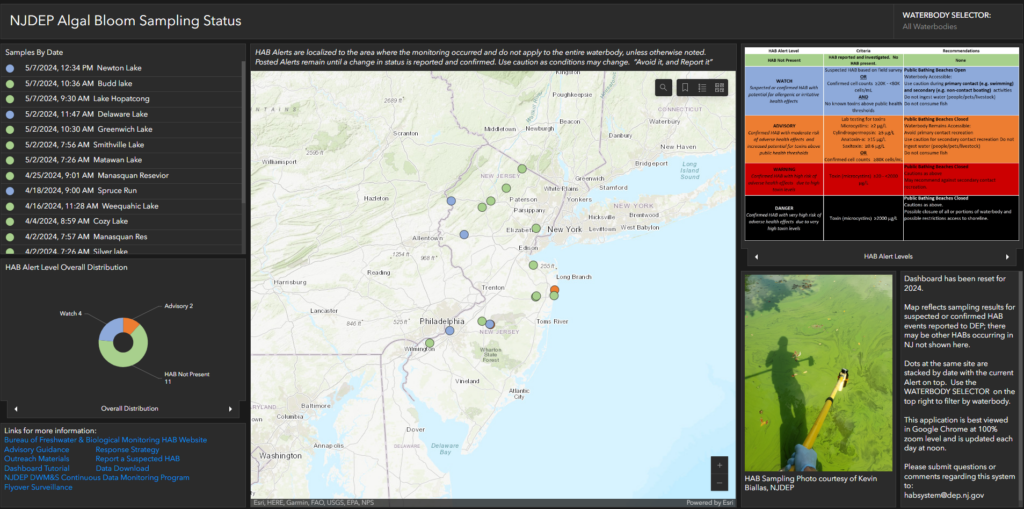
HABs: "Spilled Paint"
A growing global problem, harmful algal blooms are not caused by true algae but rather by cyanobacteria that in many ways resemble and behave like algae. These cyanobacteria naturally occur in fresh water and can proliferate to unhealthful levels in sunlight and hot weather, forming dense mats resembling pea soup or spilled paint
Exposure to cyanobacteria cells can cause a range of mild to moderate health effects, including rashes, allergy-like reactions, flu-like symptoms, gastroenteritis, respiratory irritation and eye irritation. Incidental ingestion of water containing the toxins these bacteria can produce, known as cyanotoxins, can result in more serious health effects such as liver toxicity and neurological effects. Children and pets are more vulnerable because they ingest more water in relation to their weight.
DEP has enhanced its Monitoring and Response Strategy and developed a color-coded health alert index to provide the public with strong and clear guidance on suitable recreational activities in freshwater lakes and other water bodies impacted by harmful algal blooms.
Maps & Data
Featured
2019 Governor's Initiative
Learn more about the components of the Governor’s initiative.
• Governor’s Initiative
Fact Sheet
Alert Tiers & Signs
Learn more about the 5 HABs alert tiers and download or request physical signs for posting.
Training and Outreach
Short videos on reporting HABs, using the Interactive Mapping System, and types of measurements and sample collection. Learn more about HABs-related topics with our factsheets.
HAB FAQs
Learn more about the State’s freshwater recreational response monitoring program.


